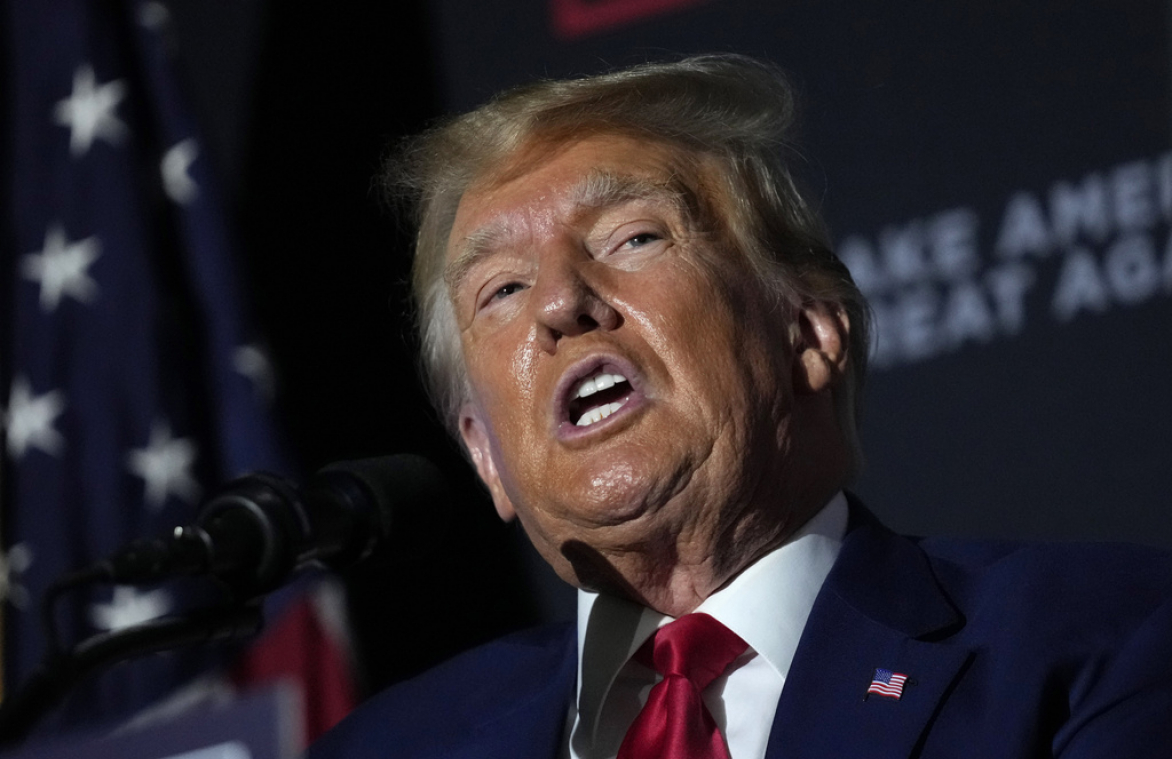Former President Donald Trump speaks at a campaign rally, Tuesday, Aug. 8, 2023, at Windham High School in Windham, N.H. AP Photo/Robert F. Bukaty
As pointed out in a previous article, one of former President Donald Trump’s defenses against the indictments that the D.C. grand jury has issued to him for conspiracy to commit fraud and obstruct voting rights is that he was simply exercising his First Amendment rights while pursuing claims to have won the election.
One of the cases that his attorneys have cited is Hammerschmidt v. United States (1924). In this case, the U.S. Supreme Court overturned a conviction against Thomas Hammerschmidt and 12 others who had been convicted of willfully and unlawfully conspiring “to defraud the United States by impairing, obstructing, and defeating” a lawful government function by “printing, publishing and circulating of handbills, dodgers, and other matter intended and designed to counsel, advise, and procure persons subject to the Selective Act to refuse to obey it.” The 6th U.S. Circuit Court of Appeals had upheld the convictions.
By contrast, Chief Justice William Howard Taft ruled that lower courts had misapplied an earlier decision in Hass v. Henkel, 216 U.S. 461 (1910). That case had, in turn, involved an alleged conspiracy in which Moses Haas and others had been charged with defrauding the United States by attempting secretly to bribe an associate statistician in the Department of Agriculture to falsify information and give them access to cotton reports before they were officially issued so they could engage in market speculation. In that case, Justice Horace Lurton had argued, “The statute is broad enough in its terms to include any conspiracy for the purpose of impairing, obstructing or defeating the lawful function of any department of government.”
In explaining what conspiracy involved, Taft said in Hammerschmidt that in addition to applying to those who were attempting “to cheat the government out of property or money,” conspiracy “also means to interfere with or obstruct one of its lawful governmental functions by deceit, craft, or trickery, or at least by means that are dishonest.” Taft further explained that “It is not necessary that the government shall be subjected to property or pecuniary loss by the fraud, but only that its legitimate official action and purpose shall be defeated by misrepresentation, chicane or overreading of those charged with carrying out the government intention.”
Taft said he did not believe that private individuals who were sending publications urging individuals to resist the draft fell into this category.
Given that President Trump was an elected official who had taken an oath to uphold the Constitution, which included an obligation to enforce the laws, it seems doubtful that Hammerschmidt will prove to be a particularly useful precedent if the special counsel, Jack Smith, can prove that Trump specifically engaged in activities to subvert the electoral process. Indeed, the charges against Trump appear far closer to the factual pattern in Haas v. Henkel, which upheld convictions, than to Hammerschmidt.
Smith took special pains to see that the charges against Trump did not involve public speeches seeking electoral reform or even encouraging protests against election results, but only his alleged actions in conjunction with attorneys and other government actors to conspire to defraud and obstruct the electoral results, thereby depriving the American people of their voting rights. In this respect, the charges against Trump appear closer to those that were upheld in Hass v. Henkel than to those at issue in Hammerschmidt.
John R. Vile is a professor of political science and dean of the Honors College at Middle Tennessee State University. He is co-editor of the Encyclopedia of the First Amendment.

